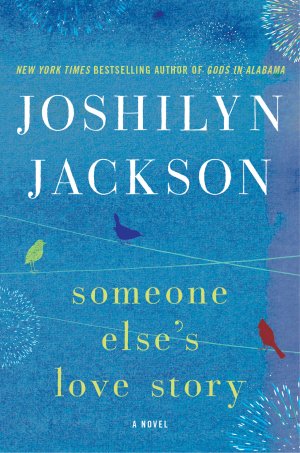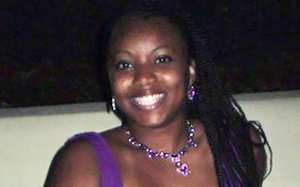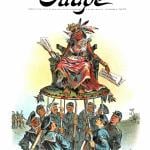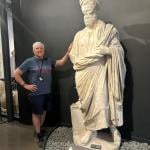So who does Pat Conroy read when he’s in the mood for a good story? Michael Morris. Conroy calls Morris one of his favorite Southern writers. Man in the Blue Moon, Morris’s latest, “is reason for great celebration –a beautifully wrought portrayal of small-town Southern life,” says Conroy. Publishers Weekly praises Man in the Blue Moon as the perfect book club read.
It was Morris’s grandfather who first told the young boy about a man being shipped to town inside of a box. Listen in as author Karen Spears Zacharias chats with Michael Morris about his grandfather and the stories that birth writers.
KAREN: The genesis for Man in the Blue Moon was a story your grandfather told you. Tell us about your grandfather.
MICHAEL: My grandfather was a character and of course everybody in the south knows what that means. He was absolutely the best storyteller I’ve known. In fact, he was so good at it that you might have to get him to tell the story two or three times to discern fact from fiction. When any discrepancies were brought to his attention he would shrug and say, “well, I was just trying to dress it up a little bit.”
One story that he always told was of a man who was shipped in a crate to his family in Florida. The man was a distant cousin and his in-laws were out to kill him. They blamed him for the death of his wife and her lover. Even though the man had been exonerated of the crime, his former in-laws were powerful people and were seeking their own form of justice. My grandfather said that their father told them not to ask any questions. The man stayed on the property for about three months and then one day vanished. Years later my grandfather discovered that the man had moved to Vero Beach and made a new life for himself.
As a child, I was always fascinated by that story and then as an adult, I knew I had to write it. I started outlining the novel on my grandfather’s 99th birthday. I am glad that he lived long enough to see the manuscript completed. Man in the Blue Moon is dedicated to his memory.
KAREN: The man in the box, Lanier, is said to possess the gift of healing. Who has played the part of the healer in your own life?
MICHAEL: The portrayal of Lanier’s healing ability can be attributed back to my grandfather too. He had the Foxfire series that chronicles the people of the North Georgia Mountains. In one of the books there is a section about those from Appalachia who are believed to have the ability to cure certain ailments like thrush or even the ability to pull fire out of someone who has been burned. Reading Foxfire helped me to develop the character of Lanier.
While I have not had physical healing, I have certainly had emotional healing. My mom and I fled an abusive household and lived in a trailer steps behind my grandparent’s home. While my mom went to vocational school to learn a trade to support us, my grandmother went to work on me. Every afternoon after lunch she would have me list out all the people in my life who loved me. If I forgot a cousin or great-aunt, she would remind me and have me to include them the next day. She helped to heal the scars to my soul. She had an eighth grade education but she remains the wisest person I’ve known. She died twenty-six years ago and there is not a day that goes by that I don’t think of her.
KAREN: Ruby is one of my favorite characters in the entire story. Something about her vulnerability makes my heart soar and lament at the same time. When did Ruby first present herself to you?
MICHAEL: Ruby was a fun character to write. She came about as a result of a conversation I had with a woman at a book festival. Like me, the woman had grown up in a small town in North Florida. Somehow we started talking about the interesting, eccentric characters in small towns – not the eccentrics of today who blend in with the community but those who stood out and held court. The woman at the festival shared that there was a young girl in her hometown who would prance down Main Street once a week, twirling a baton and leading an imaginary parade. Cars would pull over and wait for her to complete her journey. The vision of this girl, who many in the town probably discounted even though she had this power over them, captivated my imagination. I could not get her and her parade out of my head. The idea for Ruby then came into being.
KAREN: Do you sketch out the plot or the characters in advance? And if so, which do you do first?
MICHAEL: Typically I will sketch out the characters first. I have a list of questions I answer about each character – everything from their favorite color to what is the darkest secret they are keeping. Of course, not all of the information will make it into the novel but it helps me to know the characters inside and out and to hopefully make them come alive on paper. Then I scratch out an outline of the story. I write one or two sentences about different scenes and places where I see the story turning. I tell people that for me the outline is like a map. When I’m writing a novel I will go back and look at the outline but that doesn’t mean I don’t take side trips and venture into other areas I hadn’t planned.
KAREN: Brother Mabry is such a low-down dirty-dog greedy scoundrel but I know you are a man of deep faith. So why did you make the preacher the bad guy?
MICHAEL: When I was researching the novel I uncovered something that took me on one of those side journeys with plotting that I just mentioned. In the early 1940s there was a preacher who tried to make the claim that the part of Florida I am writing about in Man in the Blue Moon was the original Garden of Eden. Of course, his claim never took off but I couldn’t resist using that whole idea as an element to the story. During 1918 when Man in the Blue Moon is set, there were spas centered around springs that were thought to provide medicinal healing.
Brother Mabry is a nationally known radio evangelist from New York and he sets his sights on developing a similar retreat on Ella’s property. He plays a crucial role in the battle Ella is fighting to keep her property. To me Brother Mabry is a P.T. Barnum type of character who might have started out with good intentions but got swept up in greed. And of course, we still have those types of evangelists in our culture today. However, the community minister, Reverend Simpson, becomes the one who finally stops the persecution Lanier faces when Brother Mabry tries to exploit Lanier’s ability to heal. I wanted to present a balance in the story – the good and the bad in society, even in religion.
KAREN: One of my favorite scenes in the book is when Bonaparte and the neighbor men come across Ella’s field with their rusty saws in hand, to help cut the cypress. Their actions really speak to what community ought to look like, what it means to be a neighbor to one another. It reminded me of the way the folks in Cullman, Alabama pulled together following the devastating tornado in 2011 that cut a swath through town. What’s your thoughts about the way we do community nowadays?
MICHAEL: For some reason there is a common theme woven in all of my novels that family is more than blood kin, it’s also the people in the community who stand up and help us when we are going through difficulties. I certainly experienced that in the town I grew up in – a town not unlike Dead Lakes where Ella lives in Man in the Blue Moon.
It’s interesting that you bring up the way the people in Alabama came together when the tornados tore apart the state last year. I was talking to a man the other day about it and he pointed out that sometimes we might wave to our neighbors as we pass by their homes but when there is devastation that is when we really get to know them. A friend recently made the comment that Facebook is the new “front porch” where folks would gather in the afternoons to escape the heat and visit with their neighbors. I see people chatting back and forth on Facebook and they only live a couple of miles from one another. It keeps a dialogue going about the latest news in the town. I just hope it never replaces that face to face companionship that is so needed when tragedy, sickness or death show up at someone’s doorstep.
KAREN: You and I have both grown up with strong mothers, women whom others have viewed as vulnerable because they didn’t have husbands in their lives taking care of them, or helping them care for children. Like our own mothers, Ella has to battle against the notion that a woman is incapable of handling her own affairs successfully. And yet Neva Clarkson looks at Ella and sees a survivor. When did you come to recognize your own mother as a survivor?
MICHAEL: Ella grows as a character and I purposefully put the woman’s suffrage movement as a backdrop in the novel. While Ella is changing, the world around her is changing too. At the beginning at the novel when she received the foreclosure notice for her property, she feels that she can barely stand. She has always deepened on someone else to protect her and now she must protect herself and her sons. Although Ella’s battle to keep her land makes her realize that she is stronger than she believes, those around her see the transformation long before she does. Her friend, Neva Clarkson, is the first person to point it out.
I grew up around strong women. My mother, grandmother, and great-aunt were all strong women in different ways. After my mom and I fled my abusive father, she took a low paying job as a typist and still managed to save twenty dollars a week for my education. She was determined that I would be the first in our family to graduate college. My wife says that she cannot picture my mother being hit by a man, thinking that the woman she knows today would take down any man who assaulted her. But like Ella, my mom evolved. And like Ella, she didn’t give up. She fought to make a better way for us.
KAREN: When did you know that you would write Man in the Blue Moon?
MICHAEL: As a boy I was always captivated by the story of the man in the box that my grandfather used to tell. I would ask question after question. In fact, my grandfather said that his father told the children not to ask any questions about the man’s arrival in a box. I don’t think I would have fared to well in that time period!
After writing A Place Called Wiregrass and Slow Way Home I would visit bookstores and book festivals and the question I most often got was “did you always want to be a writer?” I really wish that I could say yes, but I didn’t consider writing until I was 32 and working in the pharmaceutical industry. After pondering the question, I came to realize that while I was not a reader or around readers, I was around storytellers. My grandfather chief among them. I then came to understand that my grandparents had led me to become a writer. All of those stories I heard as a child and pictured in my head were stories to be mined and written. I felt that I just had to explore the story and see where it led.
KAREN: Once you knew that you wanted to tell this story, how did you go about getting it down? Did you research first or just start writing?
MICHAEL: I started out by interviewing my grandfather, not only about all the details surrounding the man who was shipped in a crate, but day to day life for them living in a crossroads community in the Panhandle of Florida. I asked him what their town celebrations were like and about their trips to Panama City or Apalachicola. He talked about the way that they used to raft timber to market. All of these elements made the time and place come to life for me. Man in the Blue Moon is truly a novel based on oral history.
I also did a great deal of research reading about the time period: World War I, the woman’s suffrage movement and the 1918 flu epidemic. I sought out books about Apalachicola’s history and the South’s role in the war and the suffrage movement. Documentaries about these topics were helpful, particularly a PBS documentary on the flu that included survivor stories.
I’ll tell you how great libraries are. I was all set to travel to the University of Florida to spend time reading the 1918 Apalachicola, Florida newspapers. The Birmingham Library was able to arrange a loan with the university and the newspapers were sent on microfiche to Birmingham. I spent a couple of weeks combing through every issue. That was a big turning point for me in feeling that I was completely in the environment I was writing about. Through the newspaper searches, I was able to discover a claim that the area was considered by a few to be the original Garden of Eden and that the state was encouraging folks around Apalachicola to grow rice. Both of these elements became important parts of the story.
KAREN: What do you enjoy most about being a writer?
MICHAEL: I love how writing will transport me to another time and place. I love the days when it is going so well that my fingers feel like they can barely type fast enough to record the images and dialogue I am imagining. I also love it when a reader will tell me that she thought about the story or the characters long after the last page was finished. When I hear those words, I feel that I have done my job.
KAREN: What did writing Man in the Blue Moon teach you?
MICHAEL: Man in the Blue Moon taught me to appreciate my Florida Cracker heritage. It’s funny because those of us from North Florida will often hear people tell us that we can’t possibly have this thick of an accent and still be from Florida. In fact, one reviewer said until he read the novel he had never even thought of Florida as a Southern state. So I’m proud that I was able to capture a part of my family’s story and to show a part of Old Florida that was hardscrabble – the part of Florida that my family helped to pioneer.
The novel also taught me the importance of tolerance and what a big issue that is still today. Lanier’s ability to heal becomes a dividing force within the community and Brother Mabry uses it as a way to push his own agenda. There are a lot of topics in the novel that we are grappling with today – economic downturn, foreclosure, addiction and certainly tolerance of those we might not understand and those we disagree with.
KAREN: What’s next?
MICHAEL: I’m really excited to hit the road and visit my SIBA friends with Man in the Blue Moon. We are going from town to town for about two months. SIBA really got behind my first novel, A Place Called Wiregrass, and I am so grateful for all of the support they have given me through the years.
I am also looking forward to my next novel, The King of Florabama, which is about the longest serving sheriff in Alabama who at 80 loses his license, his office and then has to come to terms with a hidden 40 year old murder that has divided his family.











